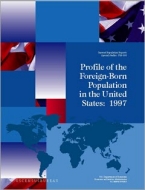Profile of the Foreign-Born Population in the United States: 1997
Profile of the Foreign-Born Population in the United States: 1997
This report presents data on a wide range of geographic, demographic, social, economic, and housing characteristics for the foreign-born population of the United States. Data for the native population are included for comparison. The data in this report for 1997 are from the March 1997 Current Population Survey (CPS). Data for 1990 and earlier years, which are included for historical comparison, are from the decennial censuses of population. Detailed tables showing data for 1997 are presented in Profile of the Foreign-Born Population of the United States: 1997, PPL-115, issued in 1999. Detailed tables showing data on the foreign-born population from decennial censuses are presented in Historical Census Statistics on the Foreign-Born Population of the United States: 1850 to 1990, Population Division Working Paper, No. 29, issued in 1999.
The reference date for data from the 1990 census is April 1. For data from the CPS, the reference dates vary depending on when the housing unit first came into the survey and on the topic. Housing units (and their occupants) in the CPS are in for 4 months, out for 8 months, and then in again for 4 months. Thus housing units in the March 1997 CPS are about equally distributed among those that first came into the survey from December 1995 to March 1996 and from December 1996 to March 1997. While data on some characteristics, including age, are updated, data on other characteristics, including length of residence in the United States and citizenship status of the foreign-born population, are not.
The core of this report is 21 two-page sections presenting information on various topics for the foreign-born population. These sections are preceded by Highlights and are followed by References and five appendixes: (A) The Foreign-Born Population and Immigration: Definitions and Concepts; (B) Source and Accuracy of Estimates; (C) Comparison of Population Universes; (D) Nativity Questions on the Current Population Survey; and (E) Related Reports and Information.
Numbers or percentages in the text, figures, and text tables may not sum to totals due to rounding. In general, percentages in the text are rounded to whole numbers for percentages of 10 and above and are shown to 1 decimal place for percentages below 10 (i.e., to show 2 significant digits); however, percentages above 10 are shown to 1 decimal place in cases where rounding to whole numbers would distort a comparison.
The Census Bureau uses 90-percent confidence intervals and 0.10 levels of significance to determine statistical validity (see Appendix B). Comparisons in the text of this report that do not meet this standard are described as being not significant.
Others in Series
Publication
Publication
Publication




